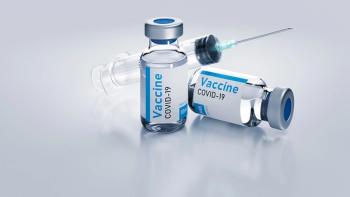
- BioPharm International's BP Elements, April 2022
- Volume 1
- Issue 4
Examining Phage Therapy
Battles against antibiotic-resistant bacteria can be won with bacteriophages.
Treatment of bacterial infections with bacteriophages (phages)—viruses that enter bacterial cells and rapidly multiply, quickly rupturing the cells and destroying the bacteria—has been known to be effective since the early 1920s. The advent of broad-spectrum antibiotics led to a halt in phage therapy research, however, except in Eastern Europe, particularly Georgia, and to some extent France (1).
Bacteria, meanwhile, have developed resistance to many antibiotics, and new “superbugs” that cannot be treated with even the most powerful antibiotics are increasingly common. There is real potential that the world could enter a post-antibiotic era in which giving birth or getting a simple
cut could present a serious risk of death. The situation is exacerbated by the fact that antibiotics have long since been commoditized, and most major pharmaceutical companies halted their antibiotic development programs in favor of investments in more lucrative areas such as oncology. Few new antibiotics drugs have been approved as a result.
Consequently, the need for alternatives to traditional antibiotics has become urgent. In addition to leading to the development of novel chemical approaches, the current threat of antimicrobial resistance is driving renewed interest in phage therapy. A lack of appropriate infrastructure and specific regulatory framework are two main challenges to the realization of marketed products. Fortunately, developers of phage-based treatments expect these hurdles to be surmountable in the medium term, with several candidates in or soon to enter clinical trials.
Drug resistance not the only driver
Fighting bacteria that are resistant to current antibiotics is what most people see as the main driver of interest in the development of phage-based therapies. For Alexander “Sandro” Sulakvelidze, president and CEO of bacteriophage developer Intralytix, there is another important factor: growing understanding of the human microbiome and its role in health and disease.
“The microbiome field is exploding, with a lot of bright minds working in the area. People are establishing links between microbiome composition and diseases ranging from those having obvious bacterial etiology (e.g., infectious and gastrointestinal diseases like bacterial dysentery) to disorders that are not typically associated with bacterial infections, such as obesity, cancer, and others,” Sulakvelidze explains. “That means that with bacteriophages we not only have the potential to manage drug-resistant infections, but also a tool that may be able to beneficially modulate the microbiome to address both infectious and noninfectious diseases,” he states.
Indeed, the human microbiome comprises hundreds of bacterial species, and maintaining the right balance of “good” and “bad” bacteria in the gut microbiome helps maintain health through multiple mechanisms including modulation of inflammation and regulation of protective gastrointestinal functions, according to Sulakvelidze. “Lytic bacteriophages are superbly suited for gentle and targeted fine-tuning of the microbiome by killing their specific targeted bacterial pathogens without disturbing the normal microflora—a unique biological property that is increasingly explored for developing novel tools for microbiome modulation and research,” he observes.
Different mechanism of action
While broad-spectrum antibiotics are attractive because they can be used to treat a wide range of bacterial infections, they also do not discriminate between “good” and “bad” bacteria. Dysbiosis and secondary infections (e.g., fungal infections, inflammatory bowel disease, reactive arthritis, etc.) can occur as a result, complications that have not been observed with phages (1). Phages could also be beneficial for patients with allergies to the commonly used penicillins, sulfonamides, and tetracyclines.
At the simplistic level, notes Sulakvelidze, phages infect bacteria by first attaching to their cell membranes. They then inject DNA into the host cells. Within 60 seconds, the phage DNA takes over and shuts down the cellular machinery of the bacteria, which allows for phage DNA replication. Within 20–40 minutes, approximately 40–200 bacteriophages exist in each of the bacterial cells, causing the cells to burst. The bacteria die, and the phages are released to seek out and infect additional targets.
This mechanism of action is different from that of traditional antibiotics. As a result, while bacteria can become resistant to phages, the mechanisms involved are very different from the one against antibiotics. “The resistance that bacteria develop to antibiotics does not affect their resistance to phages, making these two approaches complementary,” Sulakvelidze observes. Indeed, often phages can be effective against bacteria that have developed resistance to antibiotics. There have been several case reports of the effective emergency treatment of patients for which conventional antibiotics have failed (1).
Specificity a two-edged sword
The specificity of phages is advantageous because it does not result in the death of desirable bacteria. It is, however, one of the reasons that phages fell out of favor after the introduction of antibiotics. For phage therapy to be effective, it is necessary to know which bacterium is causing the infection, which is not the case for broad-spectrum antibiotics, according to Sulakvelidze. It can take time to identify the specific phage or cocktail of phages that will be effective, time that some patients may not have, particularly in cases where phages are used as a treatment of last resort (1).
Antibiotics creating problem and inhibiting alternative solutions
Another difficulty facing the advance of phage-based therapies is the fact that the medical infrastructure that exists for the treatment of bacterial infections in most of the world has been designed around antibiotics (2). From susceptibility testing kits to the sophisticated machinery required for high-throughput testing and the training of hospital and clinical personnel, everything is geared toward antibiotics, Sulakvelidze comments.
“The business model for phages is very different from that for antibiotics, which creates a whole range of challenges from manufacturing and distribution to diagnosis and identification of the right phage treatment for each patient,” says Sulakvelidze.
For Grégory Resch, head of the laboratory of bacteriophages at the Center for Research and Innovation in Clinical Pharmaceutical Sciences at Lausanne University Hospital, Switzerland, one of the biggest challenges is the complexity around producing many different specific phages under good manufacturing practice (GMP) conditions, which contrasts with the existing access to broad-spectrum antibiotics. He also notes that patenting phages is not as obvious, because many of them can easily be isolated from the environment.
Phages are manufactured via fermentation using the bacteria that serve as the natural host of the phage in question. The phage reproduces, killing the bacteria. The phage must then be separated from the dead bacteria and purified, as the dead bacteria and other contaminants can cause undesired immune responses. Fortunately, advances in fermentation technology and downstream processing have enabled successful, large-scale production of high-quality phage-based products, according to Sulakvelidze.
Production challenges, although they are being addressed, are further complicated by a lack of an established regulatory framework for the approval of phage-based therapies. The absence of a clear definition for bacteriophages, common and validated dosage protocols, and the length of phage treatments, for instance, creates uncertainty with respect to the development of clinical programs (2). On the positive side, however, many of the disadvantages of phage-based therapy relate to infrastructure and knowledge gaps that can be resolved as the field progresses.
Even so, Sulakvelidze comments that the advances Intralytix and other bacteriophage developers, such as Adaptive Phage Therapeutics and Armata Pharmaceuticals, have made have taken longer than he anticipated. “Even with the many years of work and growing number of companies involved in the field, it will still be many years before phage-based therapy becomes a mainstream treatment or at least somewhat commonly used,” he contends.
Surmounting roadblocks step by step
Intralytix was formed in 1998 by Sulakvelidze and his post-doctoral advisor Glenn Morris, an infectious disease specialist who had a patient die after a sophisticated surgical procedure due to a drug-resistant infection of the intestine—and who was not familiar with phage-based therapy. The initial goal of the company, says Sulakvelidze, was to develop phages to treat infections caused by vancomycin-resistant bacteria called enterococci or VRE. It became quickly apparent to the founders that the time was not right for targeting clinical applications given the long list of challenges for human medical applications.
Instead, Intralytix shifted its focus to food safety, which has given the company time to establish greater knowledge, build a manufacturing facility and develop effective production processes, work with regulators, and establish some of the infrastructure needed to support phage-based products. Its first commercial product was ListShield, an all-natural, non-chemical antimicrobial preparation for controlling the foodborne bacterial pathogen Listeria monocytogenes.
Today, Intralytix is using the sales revenues from its portfolio of phage-based food protection products to support the development of nutraceuticals and drug candidates. The company will launch its first dietary supplement/probiotic pill to enhance natural gut resistance against certain pathogenic bacteria in March 2022, with a second to be introduced in 2023.
Some phage-based companies focused on the development of drug candidates are also leveraging advanced genome sequencing and metagenomics technologies to engineer genetically modified phages with improved patentability, according to Resch. He adds that the hope is that these advanced phages will also have enhanced activity without impairing safety, but sufficient evidence of this benefit has yet to be gathered.
Academic centers and government bodies are also getting involved in the field of phage-based therapies, helping startup companies with funding and other means of support. One example highlighted by Resch is IPATH, the Center for Innovative Phage Applications and Therapeutics, which is located at the University of California, San Diego School of Medicine and the first dedicated phage therapy center in North America.
A few clinical trials
Over the past one hundred-plus years, phages have been administered to humans orally (tablets and liquids), rectally, topically (skin, eye, ear, etc.) as rinses and creams, intravenously, and via other
delivery approaches.
Today, phage-based therapies are in preclinical development for the treatment of a wide variety of diseases, including lung, wound and gut infections, as well as endocarditis and many other diseases that are difficult-to-treat because of the potential for complications due to antibiotic resistance.
When it comes to clinical trials, only a few have been conducted and/or are ongoing in Western medicine, according to Sulakvelidze. Phase I and Phase II studies involving phage-based therapies have been completed in chronic otitis media, respiratory infections, infected burn wounds, gastrointestinal disorders, urinary tract infections, and venous leg ulcers (1). The most common targets, says Sulakvelidze, are gastrointestinal and wound/skin infections.
One of Intralytix’s prototype phage preparations for treating infected wounds was successfully used during a Phase I human clinical trial in Lubbock, Texas—the first Phase I trial in wound healing in the United States. The company’s EcoActive bacteriophage therapy targeting adherent-invasive Escherichia coli(AIEC) in Crohn’s disease patients entered a Phase I/IIa clinical trial in 2019 and is currently enrolling participants at the Icahn School of Medicine at the Mount Sinai Hospital in New York, NY.
In October 2021, Intralytix received clearance from FDA for an investigational new drug (IND) application for ShigActive, a bacteriophage preparation to manage Shigella infections in humans, of which there are approximately 125 million cases and 14,000 deaths worldwide, the majority of the latter in children under the age of five. The company is also in the pre-IND stage with a candidate to treat VRE infections. Altogether, Sulakvelidze says Intralytix will be starting three additional clinical trials in the next 18 to 24 months.
Hopeful future
The increasing number of developmental drug products and clinical trials is a hopeful sign for the future of phage-based therapy and a first step in advancing the field. During the next few years, Sulakvelidze expects to see even more clinical trials and greater numbers of people involved in generating an ever-broadening base of scientific knowledge and establishing the infrastructure needed to enable a phage-based approach to the treatment of disease.
“Eventually,” Sulakvelidze remarks, “there will be more reference centers and clinics—maybe a handful—where people can go to get treated with bacteriophages by properly trained experts with access to the right equipment. When enough centers are established, phage-based therapy will become more commonplace nationwide, but progress toward that goal will be incremental.”
Resch adds that greater capacity to produce phages under GMP conditions will need to be constructed to support the products that advance to late-stage clinical trials and commercialization.
Part of Sulakvelidze’s reason for having high expectations for bacteriophages in medical applications is the experience Intralytix has had with FDA regarding its food safety products. “The first product took four years to get approved, with a lot of back-and-forth between the company and FDA that largely involved educating one another. The agency has required considerably less time (9 to 12 months) to reach decisions on subsequent products,” he observes.
Sulakvelidze expects that experience to translate to the company’s human health products. “FDA’s Center for Biologic Evaluation and Research is very much open and willing to work with companies developing phage-based therapies to establish a regulatory framework for ascertaining their safety and effectiveness,” he comments.
“With the potential for bacteriophages when used in combination with antibiotics as first-line therapies to provide personalized treatment solutions for challenging patient infections, there is the real [opportunity] for this new approach to be democratizing,” insists Resch. That potential in conjunction with the urgent need for solutions to the rapidly growing threat of antibiotic resistance point to a bright future for phage-based therapies.
References
1. J-P Pirnay, T. Ferry, and G. Resch, “Recent Progress Toward the Implementation of Phage Therapy in Western Medicine,” FEMS Microbiol. Rev. 2022 Jan 18; 66(1).
2. C. Brives, and J. Pourraz, Palgrave Commun 6, 100 (2020).
About the author
Cynthia A. Challener, PhD, is a contributing editor for Pharmaceutical Technology.
Articles in this issue
over 3 years ago
PerkinElmer Introduces the HTRF and AlphaLISA Assay Kitsover 3 years ago
ProteoGenix Launches New Transient Expression Systemover 3 years ago
evitria Licenses mAbsolve Gene Silencing TechnologyNewsletter
Stay at the forefront of biopharmaceutical innovation—subscribe to BioPharm International for expert insights on drug development, manufacturing, compliance, and more.





